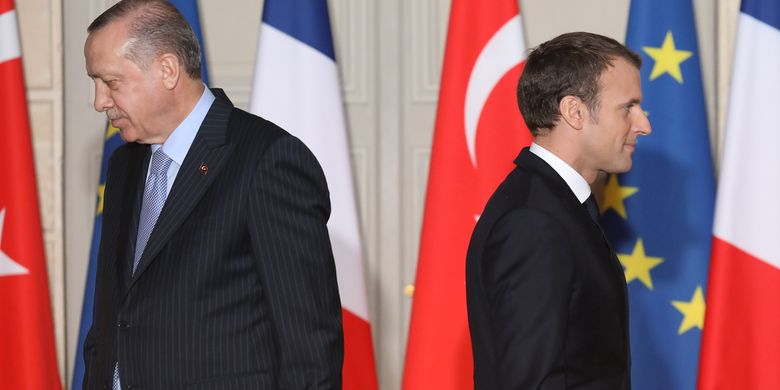Countdown to the Xacobeo. From Seville to Santiago de Compostela with 38 stages over a thousand kilometers, it is the great unknown Jacobean Route. The spectacular Ruta de la Plata, the longest route, links the Andalusian and Extremaduran spirit with the Galician Finisterre. Loaded with nature, cultural and gastronomic claims, popular festivals, peaceful fields and small towns and villages, it travels, marked by Roman milestones, historical cities such as Seville, Mérida, Cáceres and Salamanca, places declared World Heritage Sites.
Prepared for the Holy Year, which will place Galicia on the world map of pilgrimages in 2021, Andalusia, Extremadura, Castilla y León and Asturias, Autonomous communities belonging to this Vía de la Plata, have carried out an alliance to promote the Camino de Santiago through this Vía. It will become the 120th Holy Year in the history of the Compostela Holy Years, counting from the years Saint of 1182. The last one took place in 2010. Despite the current situation, they have not wanted to put aside this opportunity, which undoubtedly opens up new expectations.
The main objective is the joint work and cooperation, which this Xacobeo 2021 opportunity offers, by the four communities for the development of rural areas, cities and the entire territory in general, which passes through the Vía de la Plata , giving it a projection at the peninsular and international level. This is one of the first conclusions of the webinar held last Wednesday, organized by El Periódico. He was attended Francisco Martín Simón, General Director of Tourism of the Junta de Extremadura; Alejandro Romero Romero, Deputy Minister of the Junta de Andalucía; Cecilia Pereira Marimon, Councilor of the Xacobeo Plan and Estrella Torrecilla Crespo, General Director of Tourism of Castilla y León.
All of them represent an important part of tourism in each of their autonomous communities, in addition to projecting the image of each of them. Until now they have never faced a similar challenge.
Extremadura has three roads to Santiago: the Vía de la Plata, with 337 kilometers from Monesterio to Baños de Montemayor; the Mozárabe road that goes from Córdoba to Mérida and the Estrella road that covers part of Cáceres to Braga in Portugal that joins the Portuguese road.
Despite having been working on the project for months, Francisco Martín emphasizes that «we also want to give, for Extremadura, a context of ‘spiritual destiny’ with the Guadalupense Holy Year or that of Chandavila in the Codosera ». This spiritual tourism moves about 330 million pilgrims and tourists who visit the enclaves religious throughout the year.
He explained the importance of reaching society a message of unity from the politicians who collaborate. “What moves us is the passion for tourism, for the Xacobeo and for creating wealth and employment throughout the entire territory of the Vía de la Plata”, he clarified.
Castilla y León also has several routes and paths to Santiago de Compostela. The Ruta de la Plata has a detour along the Sanabrés road in Zamora, at the height of the Moreruela Farm. In its path, it has the Sanabria Lake, considered the largest glacier in the Iberian Peninsula and is a magnificent attraction that offers pilgrims options of new routes. Another of the roads is the Portuguese, which deviates at the height of Alcañices to the west of the province of Zamora. Alternative routes that enrich these roads.
Estrella Torrecilla, General Director of Tourism of Castilla y León, explained that in addition to the collaboration established with the four autonomous communities “we are always open to expand, promote and make this Ruta de la Plata reach other small alternative routes.”
For Andalusia the Camino de Santiago is also very important. The main idea of this community is to position its peoples in the scenario of tourist and cultural development mainly. It has a series of roads such as the Vía Augusta, which has linked Cádiz with the Vía de la Plata for more than 2,000 years or the Mozárabe road that connects Almería, Córdoba, Granada with Extremadura. In addition, the Deputy Minister of the Junta de Andalucía, Alejandro Romero, has explained that they want to incorporate, through this project, new roads such as El Rocío.
“We are very excited about this project that we are launching, the work teams are turning over and it is to feel very hopeful about the path that we still have to travel and that we will surely achieve great goals throughout this time,” he concluded.
Galicia for its part has already marked and conditioned the road. It has 230 kilometers, 13 shelters, which at this moment are only open due to covid-19, 11 of the Vía de la Plata will be open. This road runs through three provinces belonging to this community: Orense, Pontevedra and La Coruña. The Minister of the Xacobeo Plan, Cecilia Pereira stressed that “for us it is fundamental because it is the only path that passes through the province of Orense.”
The road crosses the most depopulated areas of Galicia “Sometimes we know that there are some towns thanks to the fact that the road passes through them”, explained Cecilia Pereira.
Francisco Martín-General Director of Tourism in Extremadura
“Tourism is the oil that we have under our feet”
“We hope that the Ministry of Culture responds to the demands of the four autonomous communities.” That is how resounding is the Director General of Tourism of the Junta de Extremadura, Francisco Martín. “We are going to continue to claim that the European funds that are going to be used for tourism and that are going to reach Europe also contemplate a whole plan to improve and modernize all the infrastructures through which the Vía de la Plata passes, such as the shaded spaces, for water, tourist infrastructures of companies, hostels, signage, interpretation centers, that all areas of the destination are an opportunity ”.
Francisco Martín insists that the three main issues are promotion, shared governance with friends of the road and with the four autonomous communities, and investment. “Many infrastructures deteriorate over the years and it is important to make an investment,” he said.
Estrella Torrecilla-General Director of Tourism of Castilla y León
«The sentinels will enrich the path thanks to their knowledge»
Estrella Torrecilla, General Director of Tourism of Castilla y León, says that each community will have this profile called ‘sentinel’ to further enrich those experiences that pilgrims will find during their journey along the ‘Vía de la Plata’.
They will be people who can provide pilgrims with interesting notes and valuable experiences when using this route. Also for their experience on the road, for being inhabitants of the environment through which the route passes and they know what the needs of all those who decide to do the road are. For his knowledge of gastronomy and local history. Thanks to this they will give value to the project and that differential note the pilgrim asks for. “We are open to new suggestions with the aim of continuing to enrich the project and make it much more powerful,” said Estrella Torrecilla.
Alejandro Romero – Deputy Minister of the Junta de Andalucía
“The path invites you to discover a series of very important enclaves”
Alejandro Romero, Deputy Councilor of the Junta de Andalucía reviews some of the tourist enclaves that the Vía de la Plata leaves in its passage through the Andalusian community. «It leaves from Seville, from this wonderful city there is little to say that we no longer know. It has world heritages, a gastronomy, tourism and a climate that accompanies the whole year. Once the road begins, we pass through such important enclaves as the Roman city of Itálica, the monastery of San Isidro del Campo, as well as natural parks, among others ». On the other hand, he has mentioned all those rural places that are also suffering the impact of the economic crisis generated by covid-19 and the opportunity to move forward thanks to these initiatives.
“I am very excited to participate in this type of meeting, I think it is essential to make the project known in a more general framework in which we can explain what we are working on,” he added.
Cecilia Pereira – Counselor of the Xacobeo Plan
“We have a common visual identity focused on this project”
“Covid-19 did not stop us, nor did it stop our enthusiasm for this project that we started at the end of last year. Many work days that for us were a finishing touch because we have a master plan for the Camino de Santiago and each year we set different challenges for ourselves, and the challenge for 2019 was precisely to promote the Vía de la Plata and in a very short time we are in process of achieving it », said Cecilia Pereira, counselor of the Xacobeo Plan.
In addition, the novelty is that they have created a unique website that is continually improving and incorporating more images and data. “The most innovative thing is that there is a very important part in the citizen participation plan with the creation of these ‘sentinels’ who are proud citizens of living on the road.” These people will participate in the web-series ‘The jewels of Silver’ that will take place.
……………………………………………………………………………………………………………………………………………………..

– .





